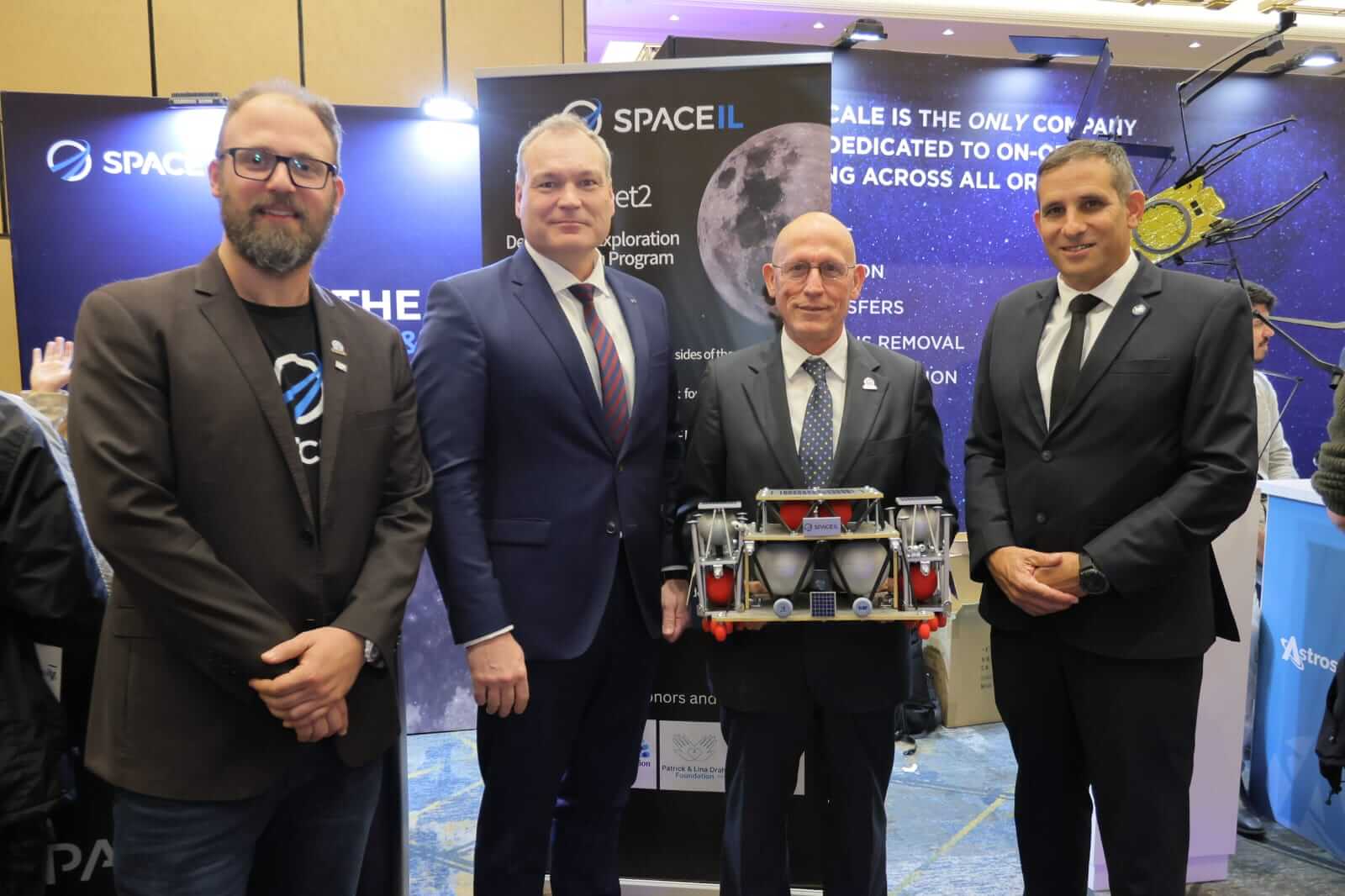The SpaceIL association and the German Air and Space Center - DLR, signed a cooperation agreement for the first time

SpaceIL association, which launched the "Genesis 1" project and is working today to promote the "Genesis 2" project, and the German Air and Space Center - DLR, signed for the first time an agreement for cooperation in the "Bereshit 2" space mission. Completion of the construction of the spacecraft is expected in the summer of 2025.
As part of the agreement, a unique navigation algorithm will be provided which was developed by the German Space Agency and will be implemented in the navigation system of "Genesis 2". The algorithm is the result of an innovative development by the German Space Agency, and it will be used as an additional sensor of "Bereshit 2" during the orbit of the spacecraft around the moon. During the landing of the spacecraft, the algorithm will assist in the navigation of the spacecraft by analyzing images and identifying craters on the surface of the moon. This cooperation will lead to the collection and analysis of current and innovative information, and will contribute to space research in Israel, Germany, and the entire international space community.
The Genesis 2 mission is planned to break several records in world space history, including a double landing on the moon in one mission, a landing on the far side of the moon (to date only China has managed to land there), and also the landings (which will be launched from the mother spacecraft) will be the smallest spacecraft launched Once for landing on the moon (each of them weighs 150 kg). In addition, the mother spacecraft is designed for a long-term mission of two to five years, and will be a platform for scientific educational activity in Israel and around the world through a remote connection. This connection will allow students from different countries to participate in scientific research in deep space.
Shimon Sharid, CEO SpaceIL, said: "We are proud to cooperate with the German space agency DLR and the possibility of using the innovative algorithm developed by them that will assist in the landings of the Genesis 2 mission. We are excited to work together with the goal of making successful planned landings on both sides of the moon in our challenging mission."
Uri Oron, Director of the Israel Space Agency in the Ministry of Innovation, science and technology, noted: "The Genesis 2 mission led by the SPACEIL association is an extraordinary example of the change in the field of space and the entry of private entities into humanity's fascinating journey to the moon and other celestial bodies. The Space Agency in the Ministry of Innovation, Science and Technology, which leads national efforts in the field, is proud of the connection with the SPACEIL association and the Genesis 2 mission and is working to maximize the scientific and educational potential inherent in the program. The collaboration emphasizes the importance that DLR sees in the mission and opens up more possibilities for this exciting mission."
SpaceIL has so far completed fundraising amounting to approximately 85% of the project's cost, which actually paves the way for a second Genesis mission to the moon. The bulk of the budget was received from a group of leading philanthropic entrepreneurs, headed by the Patrick and Lina Derhi Foundation, the Morris Kahn Foundation and the Governor's Foundation.

2 תגובות
Stop confusing people's minds about space
Space pike
We all know you can't cross the sky
Hahahahaha to land
What about an armor made of light materials that will spread over the spaceship, like a turtle, and protect from micro meteors, and also serve as an antenna?, or for other things?, maybe allow more life time for the spaceship?